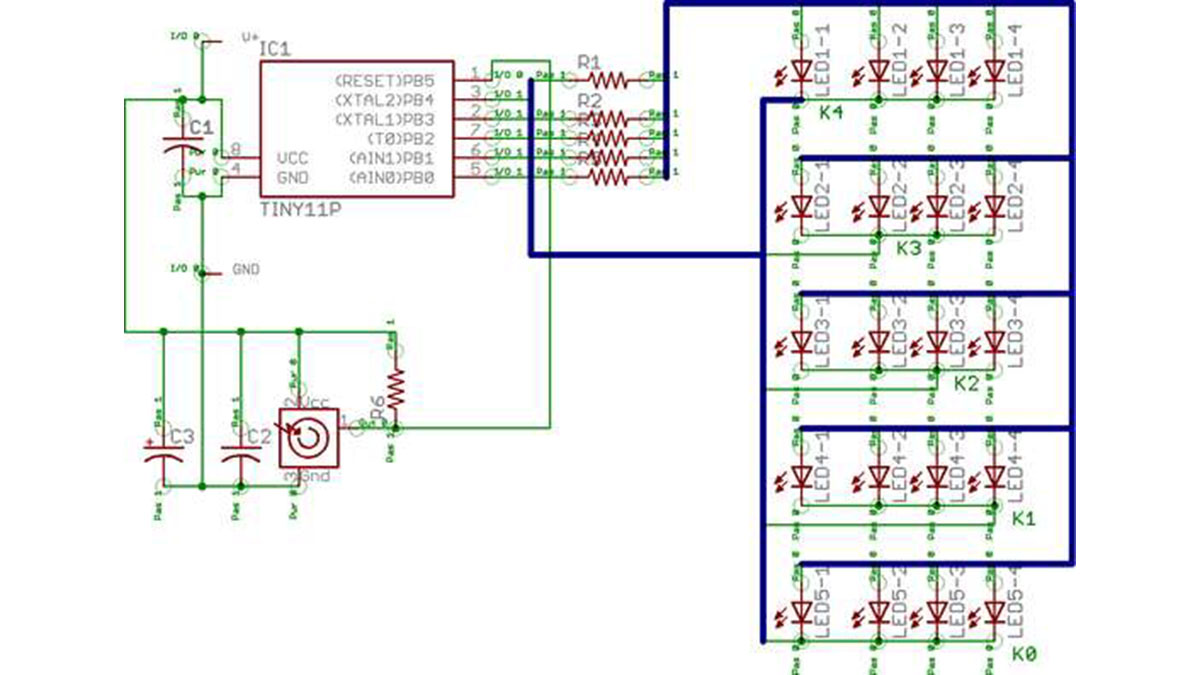Using the fact that many microcontroller pins have three states (+V, GND, or “high impedence”). You can drive N*(N-1) LEDs from N pins. So the little 8 pin microcontroller like a PIC12Fxxx or an ATtiny11 can drive 20 LEDs on its five available output pins, and still have one pin left for some kind of input.
The current crop of low pin-count microcontrollers (6 pins to 20 pins on the whole package) are attractively priced and ‘cute’, but the question arrises as to how you can make the best use of those pins for common applications such as driving LEDs.
A direct-connect approach to driving LEDs consumes one pin for each LED. A traditional multiplexing scheme where rows of LED anodes are driven by one set of N pins and each row’s common cathode is driven by another set of M pins manages to light N*M LEDs with N+M pins. However, on a processor with only 5 or fewer outputs (as is the case with most 8-pin microcontrollers), this barely gets you any more outputs than direct drive.
Assuming the output pins are actually tri-state-able (active high, active low, and high impedence (input)) it is also possible to share the row and column drivers and control N*(N-1) LEDs with only N pins.
One pin is connected to common cathodes of a row of LEDs and driven low, and the N-1 pins remaining are connected to the anodes and either driven high to light that column, or left as inputs to leave the LED off. Maxim calls this technique “Charlieplexing”, and describes it in (1); Microchip also mentions this in their document (2) (and implements in on the PICKit 1 board as well.)
For more Detail: How to drive a lot of LEDs from a few microcontroller pins.

